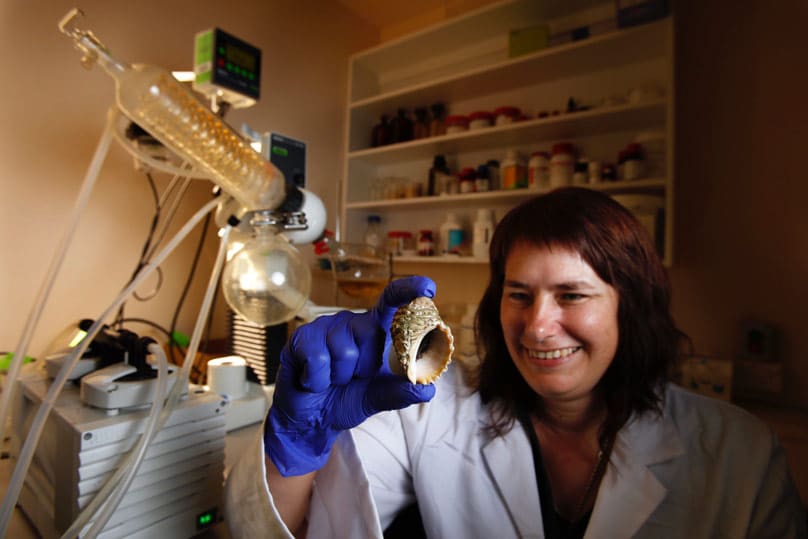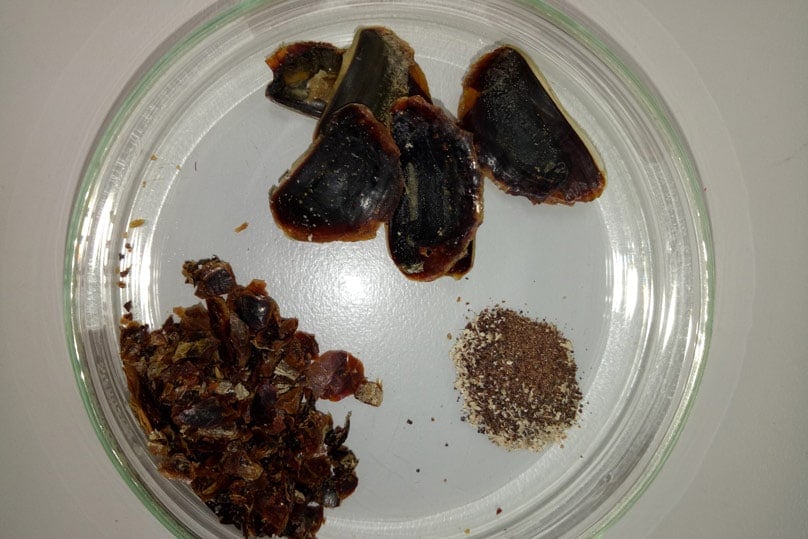
The shell of a humble sea snail is most likely to be the mystery ingredient of an incense recipe used in the time of Moses, according to new research at Southern Cross University.
Researchers were looking for traditional medicinal uses of the opercula, or trapdoor, from murex whelk shells (Muricidae) in eastern and middle-eastern cultures when they stumbled across its historical religious significance in ancient Hebrew and Arabic texts.
They learned of a long-standing controversy over whether onycha (universally defined as the opercula of certain types of marine whelks) was used for ceremonial incense, considering molluscs are included amongst the ‘unclean’ animals of biblical times and opercula has an unpleasant fragrance when burnt.
PhD candidate Bijayalakshmi Devi Nongmaithem and supervisor Associate Professor Kirsten Benkendorff from the University’s Marine Ecology Research Centre set themselves to settling the question.
Using a purpose-built ‘smoke collector’ they analysed the smoke of burnt opercula from the predatory sea snails after treating it using traditional methods prescribed for onycha in ancient Hebrew and Arabic texts.

They were delighted to find that after a traditional pre-soaking with wine and vinegar, the ‘fishy’ odour was removed as well as pyridine, a potentially toxic compound.
It had properties which aligned with the biblical descriptions of onycha, one of the four main ingredients of sacred incense as prescribed in the Old Testament book of Exodus (30:34-36).
“It was just one of those serendipitous discoveries,” Professor Benkendorff told The Catholic Weekly.
“It was most exciting, and you wonder, how did these people of ancient times know to do this? It’s quite amazing.”
The pair worked in collaboration with researchers from Southern Cross Plant Science Analytical Research Laboratory and the study was published in the nature journal Scientific Reports.
When analysing the compounds found in the opercula smoke they discovered both a mild medicinal odour and stabilising qualities which would prolong the fragrance of incense.
“Our study provides the last piece in the puzzle, by providing evidence that when prepared using traditional methods, the opercula does contain agreeable fragrances,” Professor Benkendorff said.
She believes the processes of preparing opercula for holy incense were probably deliberately kept secret due to its high value and religious significance. The knowledge may have been lost after the fall of the Byzantine court in Constantinople and the destruction of the Hebrew Second Temple in Jerusalem.
“Whilst we cannot conclusively identify muricid opercula as the original source of onycha retrospectively, our chemical analyses do confirm fixative properties and medicinal scent qualities consistent with this type of ceremonial use,” she said.
